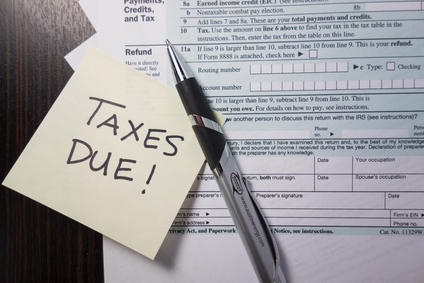 Here’s my latest MoneySense blog. Now that it’s April and Easter is almost here, you know what that means! It’s tax-filing time: April 15th for Americans, April 30th for Canadians.
Here’s my latest MoneySense blog. Now that it’s April and Easter is almost here, you know what that means! It’s tax-filing time: April 15th for Americans, April 30th for Canadians.
As the piece recounts, even if you’ve been staying on top of inputting tax slips and receipts, if you have taxable income you’re better off waiting a few days before filing.
But the good news is that once you file, the onerous task is over for another year, and many can also expect a refund. Plus, of course, winter is finally all but over.
By Jonathan Chevreau
Now that it’s April (no fooling!), Canadian taxpayers are running out of procrastination time to file their annual taxes. There’s a good reason why the Easter weekend is often crunch time for filing one’s taxes due April 30th.
By the end of March or very early in April, you can expect the last of the T-3 slips to have arrived in your mailbox. T-5 slips (which show interest income and dividend income paid outside registered accounts) had to be mailed out by the investment industry by the end of February.
Unfortunately for those inclined to file as early as possible (such people do exist: they usually expect hefty tax refunds!), T-3s don’t have to be mailed out until the end of March. T-3s show investors (and the Government!) any non-registered income paid out by income trusts and REITs, Exchange-traded funds (ETFs) and mutual funds. These are sent out by your brokerage or, in the case of mutual funds, directly by the fund company.
Avoid having to refile because of late slips
A lot of T-3s arrived weeks ago but I received my own late arrivals for a few ETFs and REITs just at the end of last week. Since the T-3 deadline is March 31, you’ll want to wait a week for the stragglers to arrive by mail: the last thing you want to have to do is to amend your return after you’ve already sent it in, nor do you want to be penalized for failing to report income.
Also, be aware that some financial institutions (like TD Direct Investing) may not be sending slips by snail mail but instead by e-mail: they may remind you to check your online brokerage account for electronic versions of these slips. In fact, I got one from TD yesterday, while it was still March.
Meanwhile, you’ve probably been sitting on your employer-issued T-4s for weeks now, along with charitable receipts, RRSP contribution slips and a host of other documents that should help reduce your taxable income.
Personally, to avoid the stress of this annual ordeal, I use the cloud-based tax software made by Intuit Canada’s TurboTax. It picks up all the information from last year, including personal data, past capital gains and loss information, RRSP carryforwards and much more. While it may not help you this year, I find it useful to input the data just as soon as it arrives in the mailbox.
NetFiling is relatively painless
So when the last straggler T-3s came in, it was five minutes of work to get to the point where we’re almost ready to NetFile. If new to tax software and NetFiling, go to the CRA’s NetFile site for instructions. It used to be that you needed a four-digit code the CRA mailed out, but this has been replaced. All you now need is your Social Insurance number. NetFile has been operational since February 9, 2015; you’ll just want to make sure your tax software is certified for NetFile use. The site includes a list of most of the major such products. And remember that if you’re a student or someone who earned very little last year (say, under $20,000), it’s likely that the tax software will be free of charge.
Easter weekend is a good time to go over the whole return one last time to make sure you’ve remembered every last deduction. But if you have substantial non-registered investments, I suggest holding off on hitting the NetFile send button until after the long weekend, just in case one or two more late arrivals make their appearance. If all your wealth is in RRSPs and TFSAs, then blast away this weekend.
As veteran NetFilers well know, there’s a great feeling of relief once the Canada Revenue Agency acknowledges the receipt of your filing: usually within a minute or two of sending. Hopefully, you’ll then have a pleasant few weeks of watching spring arrive without the burden of tax preparation on one’s mind. With luck, a small tax refund may arrive just about the time the real tax procrastinators are scrambling to make the filing deadline, which this year falls on a Thursday.
If you owe the CRA any money at all, April 30th is a deadline you definitely don’t want to miss. The late-filing penalties and interest charges are onerous and – ironically – not tax-deductible! And if Ottawa owes you, the sooner you get a refund, the better.
Editor-at-large Jonathan Chevreau runs the Financial Independence Hub and can be reached at jonathan@findependencehub.com


If you’re stressing about getting your taxes in on time, take advantage of filing for an extension. It’s simple, quick, and free, and in most cases can be done online through FileLater.com. Filing for an extension allows you an additional six months (until October 15th) to submit your tax documents, which can be hugely beneficial. Keep in mind that although you may be granted an extension to file your taxes, that does not give you more time to make your quarterly payments. Check this 20% discount code to help you file your extension: http://bit.ly/1F3e9mD